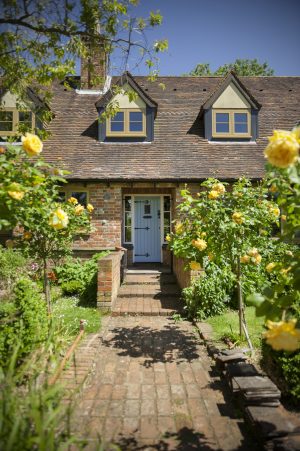How to win work in conservation areas


There are more than 10,000 conservation areas in England and 370,000 listed buildings. On top of that, 21% of the UK’s housing stock was built before 1919 and 16% between 1919 and 1944. It means a sizeable slice of UK housing stock falls into the period home category, so what are the ‘dos’ and ‘don’ts’ in period replacements and replacements in conservation areas?
“Period replacements are comparatively straight forward,” says Richard Hammond, sales director, Universal Trade Frames.
“As an industry we’ve come a long way. With the wide range of flush casements and far more sympathetic VS options, we can offer homeowners an opportunity to drive up the thermal performance of their homes while retaining traditional character.
“Conservation areas are a little more complex – but still accessible with the right products.”
What is a Conservation Area and how do you know if you’re working in one?
If the property is in a conservation area it should have been picked up by the customer’s solicitor at the point at which they purchased their home, so they should know. “Local knowledge, however, pays dividends,” Richard says, “if in any doubt, it’s worth contacting your local planning authority.”
What is the best window system for Conservation Areas?
Richard argues that with a little research, care and consideration, conservation areas represent a good hunting ground for installers – if you have access to the right products. He suggests the Residence Collection and R9 specifically, should be the go-to product.
“Residence 9 has been designed to replicate a 19th century timber window, paying incredible attention to detailing which gives it far more sway with conservation and planning officers,” he says.
“Approvals aren’t guaranteed but the precedent is established because R9 has been installed in Conservation Areas nationwide, so your client is less likely to get push back.”
According to the department for Energy Security and Net Zero around a quarter of all UK homes have solid walls. That’s around 8.5 million properties. The majority of these were built before 1920, with properties built pre-1920 making up around 20% of the UK’s current housing stock.
Achieving U-values of as low as 0.8w/m2K R9, in common with the wider Residence Collection, R9 delivers significant energy savings. “It’s not only about aesthetics, it’s a fantastic window and a key tool in improving the energy efficiency of older homes. That’s an increasingly important factor in driving a higher rate of Conservation Area approvals,” Richard says.
Universal Trade Frames’ has carved out a position for itself as a specialist supplier of premium products.
This includes the complete Residence collection manufactured as a non-glass bonded Timberweld product as standard.
Timberweld Residence Collection windows from Universal Trade Frames replicate the traditional 90° external and internal butt weld inside and out. It means it has a mechanical joint appearance, but under the surface, hidden away it’s fully welded.
Richard continues: “It looks exactly the same as a mechanically jointed flush sash but with the important difference that as a fully welded window, you get the strength synonymous with fusion welding, totally eliminating the need for glass bonding.
“It delivers a major advantage to installers because it means R9 windows from Universal can be fitted in exactly the same way as any other window, saving time and money on site and maximising margin.”
A specialist premium offer
Operating from a 30,000ft2 manufacturing facility in Shrewsbury, Shropshire Universal Trade Frames combines cutting-edge fabrication with a world class 98% OTIF.
In addition to the Residence Collection its premium product ranges include Epwin flush casement; and Solidor composite doors; in addition to the Spectus vertical sliding sash window.
“The Spectus VS has an established reputation for faithfully replicating the appearance of traditional sash windows,” Richard says.
“We’ve taken that a step further by adding an ultra-slim meeting rail. At only 37mm it’s a 100% reflective of the sightline on a traditional timber sash window.
“Alongside Residence Collection, it generates new and high margin opportunities, in the conservation space.”